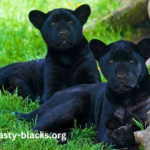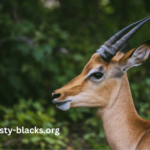The concept of hybridization in the animal kingdom opens a captivating chapter in the study of biodiversity. Hybrids emerge when two different species mate, producing offspring that often exhibit a blend of traits from both parent species. The phenomenon of animal:6pkkmizmzxw= Hybrid is not only scientifically significant but also culturally intriguing, as it raises questions about identity, adaptation, and survival. This article aims to provide a comprehensive exploration of animal hybrids, addressing key questions that illuminate their nature and implications.
What Are Animal Hybrids?
Animal hybrids are the offspring resulting from the mating of two distinct species. These hybrids can arise within the same genus or across different genera, depending on the genetic compatibility of the parent species. A well-known example is the mule, which is a hybrid between a horse and a donkey. Mules inherit desirable traits from both parents, such as strength and endurance, yet they are typically sterile due to the differing number of chromosomes in their parent species.
The concept of hybridization extends beyond mere genetics; it embodies the idea of adaptability and resilience in the face of changing environments. Hybrids can exhibit characteristics that are beneficial for survival in specific habitats, showcasing the dynamic interplay between genetics and the environment. The study of animal:6pkkmizmzxw= Hybrid offers insights into the complexities of genetic variation and adaptation in nature, revealing how life can thrive even amid diverse challenges.
How Do Hybrids Form in the Wild?
Hybrids can occur in the wild when species with overlapping habitats encounter each other and mate. This often happens in areas where environmental pressures force different species to adapt to similar ecological niches. For instance, coyotes and domestic dogs can interbreed, producing hybrids known as coydogs, particularly in regions where their ranges overlap.
The formation of hybrids is influenced by several factors, including habitat loss and environmental changes. When natural habitats are disrupted, species may be forced into closer proximity, increasing the likelihood of hybridization. This phenomenon is particularly notable in urban areas, where wildlife encounters human populations, leading to unexpected pairings. Understanding these dynamics is crucial for conservation efforts, as hybrids can influence the genetic diversity of wild populations.
Additionally, the behavioral traits of animals play a significant role in hybrid formation. Animals that exhibit less territoriality or have flexible mating strategies are more likely to hybridize. For example, in regions where climate change alters habitats, species that once occupied separate territories may begin to interact more frequently, resulting in hybrid offspring. The implications of such changes extend beyond individual species, affecting entire ecosystems.
What Are Some Examples of Hybrids?
The animal kingdom showcases a diverse array of hybrids, each with unique characteristics. One of the most fascinating hybrids is the liger, the offspring of a male lion and a female tiger. Ligers are known for their enormous size and are typically larger than either parent species. They exhibit a mix of traits, such as the lion’s social behaviors and the tiger’s solitary hunting skills. Ligers often face health issues due to their size, which is a result of genetic factors that can lead to developmental problems.
Another example is the wholphin, a hybrid of a false killer whale and a bottlenose dolphin, which has been observed in captivity. Wholphins are unique not only in their genetic makeup but also in their social behaviors, often displaying characteristics of both parent species. They represent an interesting case study for researchers, as they provide insights into the cognitive and social abilities of hybrid animals.
The blending of traits in hybrids can sometimes lead to unexpected adaptations. For instance, the beefalo—a hybrid of domestic cattle and bison—has been bred to combine the hardiness of bison with the docility of cattle. This hybridization can result in livestock that is more resilient to harsh environmental conditions, showcasing how hybrids can contribute to agricultural practices.
What Are the Benefits and Challenges of Hybridization?
Hybridization can offer several advantages, particularly in adapting to changing environments. Hybrids may inherit beneficial traits that enhance survival, such as disease resistance or adaptability to new habitats. For example, some hybrids may exhibit improved foraging abilities or heightened awareness of predators, allowing them to thrive in environments where their parent species may struggle.
However, hybridization also presents challenges, particularly in terms of conservation. When hybrids interbreed with parent species, it can lead to a dilution of genetic purity, potentially threatening the survival of endangered species. The phenomenon of animal:6pkkmizmzxw= Hybrid thus presents a double-edged sword in the realms of ecology and conservation biology.
The potential for hybridization to disrupt existing populations cannot be overlooked. In cases where hybrids have advantages over purebreds, they may outcompete native species for resources, leading to declines in populations that are already at risk. This dynamic is particularly concerning for species with limited genetic diversity, as hybridization can exacerbate their vulnerabilities.
Moreover, the presence of hybrids can complicate conservation efforts. Identifying and managing hybrid populations requires careful genetic monitoring and assessment, as the presence of hybrids may skew population estimates and complicate breeding programs. Conservationists must balance the need to protect pure species while acknowledging the role that hybrids can play in an ever-changing environment.
How Does Hybridization Affect Ecosystems?
The impact of hybridization on ecosystems can be profound. Hybrids can play a role in altering the dynamics of food webs and competition. For example, when hybrids are introduced into an ecosystem, they may compete with native species for resources, potentially disrupting existing ecological balances. Additionally, hybrids may occupy new ecological niches that their parent species do not, which can lead to changes in community structures.
A notable case is the introduction of hybridized fish species into freshwater ecosystems. These hybrids can outcompete native fish for food and habitat, leading to declines in local populations. The consequences can ripple through the ecosystem, affecting not just fish but also other species that rely on them for food. The study of animal:6pkkmizmzxw= Hybrid thus underscores the interconnectedness of species within ecosystems and the need for careful management of hybrid populations.
Hybrids may also influence predator-prey relationships. For instance, if a hybrid predator exhibits different hunting strategies or abilities compared to its parent species, it could alter the behavior of prey species, leading to unexpected ecological outcomes. These changes highlight the importance of understanding hybrids in the context of ecosystem dynamics.
What Are the Ethical Considerations Surrounding Hybrids?
The creation and management of hybrids raise important ethical questions. In captivity, hybrids are often bred for specific traits or novelty, leading to concerns about animal welfare and conservation ethics. For example, the breeding of ligers and other hybrid big cats can lead to health issues due to their unnatural size and genetic makeup. These health problems can include skeletal deformities and organ dysfunction, prompting debates about the morality of such breeding practices.
Furthermore, there is ongoing debate regarding the conservation value of hybrids versus purebred species. While some argue that hybrids can help maintain genetic diversity, others contend that efforts should focus on preserving endangered species in their pure forms. This tension raises critical questions about the definition of species and the priorities of conservation strategies.
The ethical implications extend to how we manage hybrid populations in the wild. Should conservationists intervene to limit hybridization, or should they allow nature to take its course? Striking a balance between preserving genetic integrity and acknowledging the reality of hybridization is a complex challenge.
Moreover, the commodification of hybrids—particularly in the pet trade and exotic animal markets—raises ethical concerns about exploitation and welfare. Many hybrids, bred for novelty, face significant challenges in captivity, including behavioral issues and health problems. Addressing these ethical dilemmas is essential for ensuring responsible management of hybrid populations.
How Are Hybrids Studied in Science?
The study of animal:6pkkmizmzxw= Hybrid is an interdisciplinary field that encompasses genetics, ecology, and conservation biology. Researchers utilize various methods to explore hybridization, including genetic analysis and field studies. Advances in genetic sequencing technology allow scientists to better understand the genetic makeup of hybrids, tracing lineage and assessing the impacts of hybridization on parent species.
For example, researchers may conduct genetic studies to identify hybrid individuals in populations, which can inform conservation strategies. Field studies that observe the behavior and interactions of hybrids with parent species provide valuable insights into their ecological roles. These studies are critical for understanding the dynamics of hybrid populations and their impact on ecosystems.
Furthermore, experimental studies involving hybrids can illuminate the adaptive traits that may arise from hybridization. By observing hybrids in controlled environments, scientists can assess how hybrid characteristics influence survival and reproduction. This research is essential for developing informed conservation strategies that address the complexities of hybrid populations.
What Is the Future of Hybrids in Nature?
The future of animal hybrids is closely tied to ongoing environmental changes, habitat loss, and climate change. As species continue to adapt to shifting conditions, hybridization may become more prevalent. This trend raises critical questions about the genetic integrity of species and the potential emergence of new hybrid forms.
In a rapidly changing world, hybrids may serve as indicators of environmental stress and adaptability. Understanding how hybrids respond to challenges such as climate change can inform conservation practices aimed at promoting resilience in ecosystems. Conservation efforts must evolve to address the realities of hybridization, balancing the need for preserving pure species with the understanding that hybrids can also play valuable roles in ecosystems.
Moreover, as human activities continue to impact natural habitats, the dynamics of hybridization are likely to shift. Increased urbanization, habitat fragmentation, and climate-induced changes in species distributions may create more opportunities for hybridization. Recognizing and managing these changes will be crucial for maintaining biodiversity and ecological health.
The exploration of animal:6pkkmizmzxw= Hybrid will remain a vital area of research as we navigate the complexities of biodiversity and conservation in an uncertain future. As our understanding of hybridization deepens, we can develop more effective strategies to protect both pure species and hybrids, ensuring the survival of diverse forms of life on our planet.
Conclusion
The study of animal:6pkkmizmzxw= Hybrid reveals a rich tapestry of interactions within the animal kingdom, highlighting the intricacies of genetic variation and adaptation. As we continue to explore the nature of hybrids, we gain valuable insights into the challenges and opportunities they present for biodiversity and conservation. Understanding the dynamics of hybridization is crucial for managing ecosystems and preserving the delicate balance of life on Earth.
As hybrid animals become more prevalent in our changing world, our commitment to responsible stewardship and ethical considerations will shape the future of these remarkable creatures. Through continued research and thoughtful conservation efforts, we can better appreciate the role that hybrids play in the natural world and ensure that they contribute positively to the rich biodiversity that sustains our planet.










